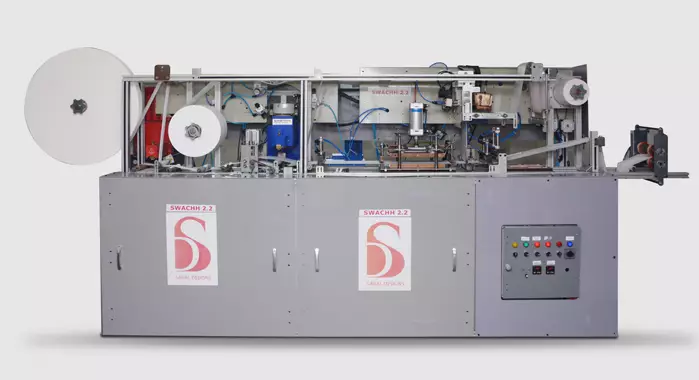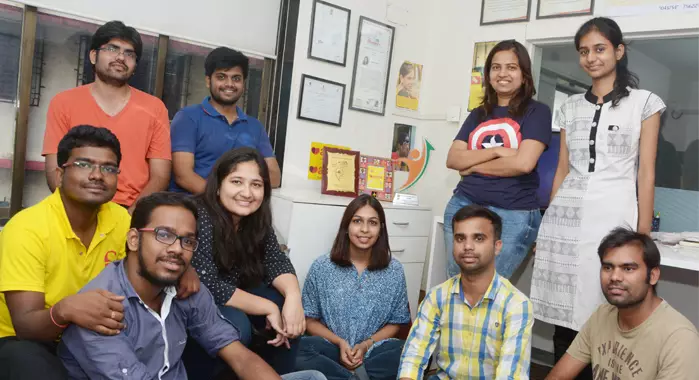Facilitating superior menstrual hygiene across rural India
Saral Design aims to improve menstrual hygiene and sanitation scenario with its patented machine called Swachh, which produces ultra-thin sanitary napkins. The firm has sold over 1.3 million pads changing the lives of over 20,000 women. Founder Suhani Mohan says packaging has been an enabler
14 Oct 2017 | By WhatPackaging? Team
For Sapna Marde, ‘that time of the month’ is truly a dreaded period; and this has nothing to do with her seething stomach pain, increased body temperature or blood stains. What she actually fears is requesting her family members to purchase sanitary napkins.
“I hardly go to the town as I feel shy asking my family members to get pads for me. Hence, I had to use cloth,” says Marde.
This sentiment is resonated by 84% of the rural Indian women. With so many taboos linked with menstruation, a simple demand like asking for menstrual hygiene is a thing of shame and embarrassment. And just like Marde, women in rural areas lack access to a simple, yet important thing like sanitary napkins.

Currently, the sanitary napkin market is dominated by large-scale MNC’s. But because of high distribution costs, the products are 60% more expensive in voluminous products like pads and diapers. Also, many existing brands do not really cater to remote locations.
After extensively researching on the plight endured by these women, Suhani Mohan, a young girl from Mumbai decided to tackle this issue ingeniously.
Suhani along with Kartik Mehta co-founded Saral Designs in 2015. With a background in machine design and engineering, Mehta is the quiet force at Saral Designs, responsible for designing its patented manufacturing machine that produces ultra-thin sanitary pads.
In just a short span of time, Saral Designs has sold over 1.3 million pads changing the lives of over 20,000 women. By tying-up with NGOs and organising outreach programmes, Saral Designs has reached out to over 100,000 women. With their product live on Amazon eCommerce website, they hope to double these numbers by the end of next year.
In conversation with Bizongo's Vartika Gupta, Suhani Mohani describes the Saral journey and the role of packaging
When you founded Saral Designs, what was the objective?
Suhani Mohan (SM): Saral Designs is a startup, which works towards creating a better future in menstrual hygiene and sanitation using product design, machine technology, and innovative delivery mechanisms. In order to tackle the issue of menstrual hygiene, it was important for us to get genuine and direct feedback from our target audience – the rural Indian women. And honestly, the process was extremely enriching. For example, we had initially priced the product at less than Rs 10 and our packaging was brown in colour and carried minimum instructions. The women returned the next day with an embarrassing look on their faces. Apparently, their children thought there were chocolates inside.
So, was your design process iterative?
SM: Yes, we did undergo an extensive iteration process for packaging design. After three years, the packaging design of our product, Active, has finally struck the right balance between colour, intent, and education. Even though the price of a product is usually the deciding factor while making a purchase, at the end of the day, people want value for their money; no matter who your audience is. This is why our packaging talks more about the quality of our product.
We looked at it more from a brand perspective. What does Active really signify and what does it want to communicate? Educating our audiences about the health benefits of using a napkin has always been our priority. A plus sign perfectly describes that. Other factors like the meaning of terms like super absorbency and length of wings have also been explained.
You have used distinct colours on the packaging…
SM: Active comes in a small, compact box. Unlike plastic, printing on boxes is quite costly. We strategically finalised three colours and ideated our design accordingly. In order to stand out as a brand, it was important for us to take the road less taken. Instead of going for subtle colours like pink and blue to help viciously hide these packets, we decided to go for a more distinct colour on our packaging and not let the women feel embarrassed with what they were carrying. The Active packaging is a bright yellow outer cover that talks about the various health benefits, quality of the product and instructions on how to use it and dispose of. We also decided on not having an image of the napkin but instead allocating the extra space on educating the buyers.
How significant has the role of packaging been in your attempt to tackle this taboo topic?
SM: Packaging has been an enabler. Early into our journey, we figured that a salesperson or an advertisement can only bring the customer to your product, but it is the packaging that finally converts. Especially when you are looking to scale your business, your packaging becomes the voice. When it comes to packaging, quality matters a lot. Small things like smoothness in finishing, the thickness of the outer cover, quality of the material, are major deciding factors.

Please elaborate…
SM: Earlier the GSM of our sanitary packet was very low because of which the napkins inside were visible. This gave the outer cover an impression like it had spots on it, giving the product a very cheap look. In our next manufacturing batch, we decided to increase the GSM. With direct feedback from our target audience, we kept iterating on the packaging specifications.
What were the critical product-related consumer feedbacks?SM: One of the major concerns of our users was maintaining the pads once the plastic was opened. The pads would literally keep dropping out from the cover. Hence, we introduced Active in a compact box. One can remove the required pads and neatly tuck away the box. Saral Designs is the first company to bring this concept into the market.
We give a lot of importance to packaging as it has proved to be an effective way to change brand loyalties and perception of people.
For a start-up, has packaging procurement been a challenge?
SM: Luckily for us, we were in an industrial area so we were interacting with a lot of manufacturers and distributors. Unfortunately, our minimum order quantity was very small. I mean we cannot stock five-lakh boxes and then hope to change the design as per feedback.
The big manufacturers do not really entertain small players like us and as a start-up, it is very difficult to pre-invest and stock packaging products, especially when we are undergoing so many iterations. Also, when you are new, the people you are dealing with can see that you are new. And of course, they end up quoting extremely high costs. Despite repeated negotiations, it was very difficult for us to find someone under our budget.
So, how did you go about it?
SM: Bizongo came to our rescue. Working with Bizongo, we were able to eliminate the hassle of negotiating with suppliers. We could get quite a lot of favourable rates than what we were getting outside. Also, the payment cycles were quite friendly. Initially, when you do not have good relations with suppliers, they look for upfront payments from the customers, which is understandable. But for a start-up, it is quite difficult. With Bizongo taking care of our end-to-end packaging, we were able to get the same packaging on credit. As a start-up, every penny counts; and this payment method saved us from burning a hole in our pockets.
The other good thing about Bizongo is that the pricing for standardised packaging products like cartons and tapes on the Bizongo website is really unbeatable.
For such packaging that is used in our day to day operations, it greatly eases our mind when ordering from Bizongo. Just click a button and your order is delivered. There is absolutely no worrying whether the truck has left the warehouse, or the supplier has started the manufacturing batch. It has helped us save a lot of time.
Will you recommend Bizongo to other start-ups who cannot afford to have their own packaging development and procurement teams?
SM: Well I already refer Bizongo to a lot of my fellow entrepreneurs who are starting into the manufacturing space. It doesn’t matter which sector you are working in since the primary and secondary packaging is required in every hardware product. In manufacturing, there are a lot of aspects that you have to take care of and procuring packaging is a big vertical that you have to manage. With Bizongo, this big chunk of your time and energy is saved; helping you to focus on your core business.
So, what’s the future of packaging in the menstrual hygiene industry?
SM: Some of our team members had recently travelled to China and found some amazing packaging designs. In China, the sanitary market is saturated. More than 70% of the women in China actively use napkins, as opposed to the 16% in India, and the competition is quite fierce there. In order to attract customers, the brands there focus a lot on quirky, smart, user-friendly packaging. Like, one of the brands had designed their sanitary pad packaging to look like a lunch box so that the school girls can carry it easily; there was another whose design looked similar to how a fresh wipes packaging is designed. The scope in India is immense but the current market leaders do not really think around how to elevate packaging for ease of use. With more people adopting sanitary napkins into their daily lives, this stagnation in design and innovation is sure to change.

Team Saral Design
Vartika Gupta is a senior content marketer at Bizongo, a B2B packaging marketplace. This article was first published on Bizongo website.














 See All
See All